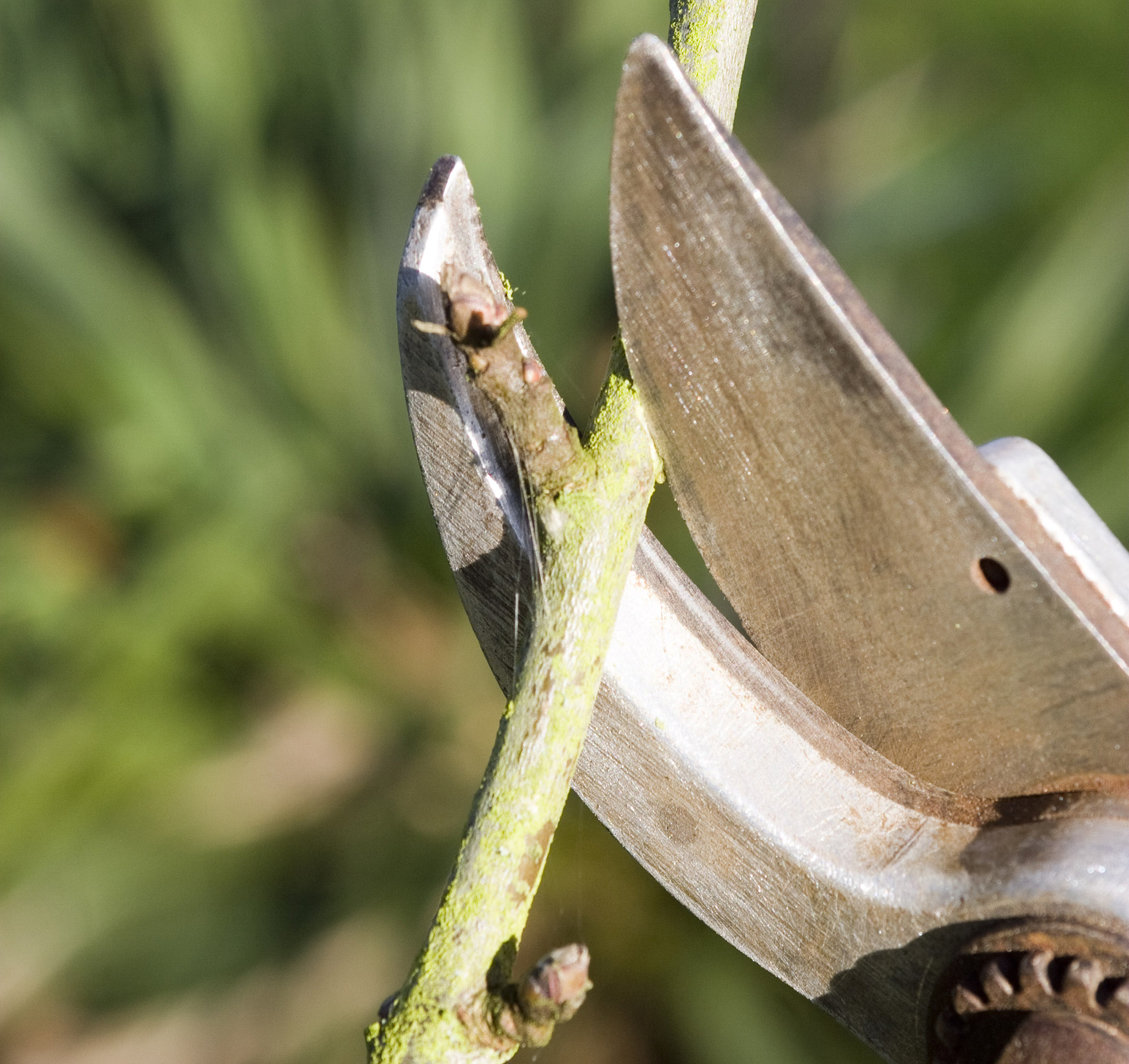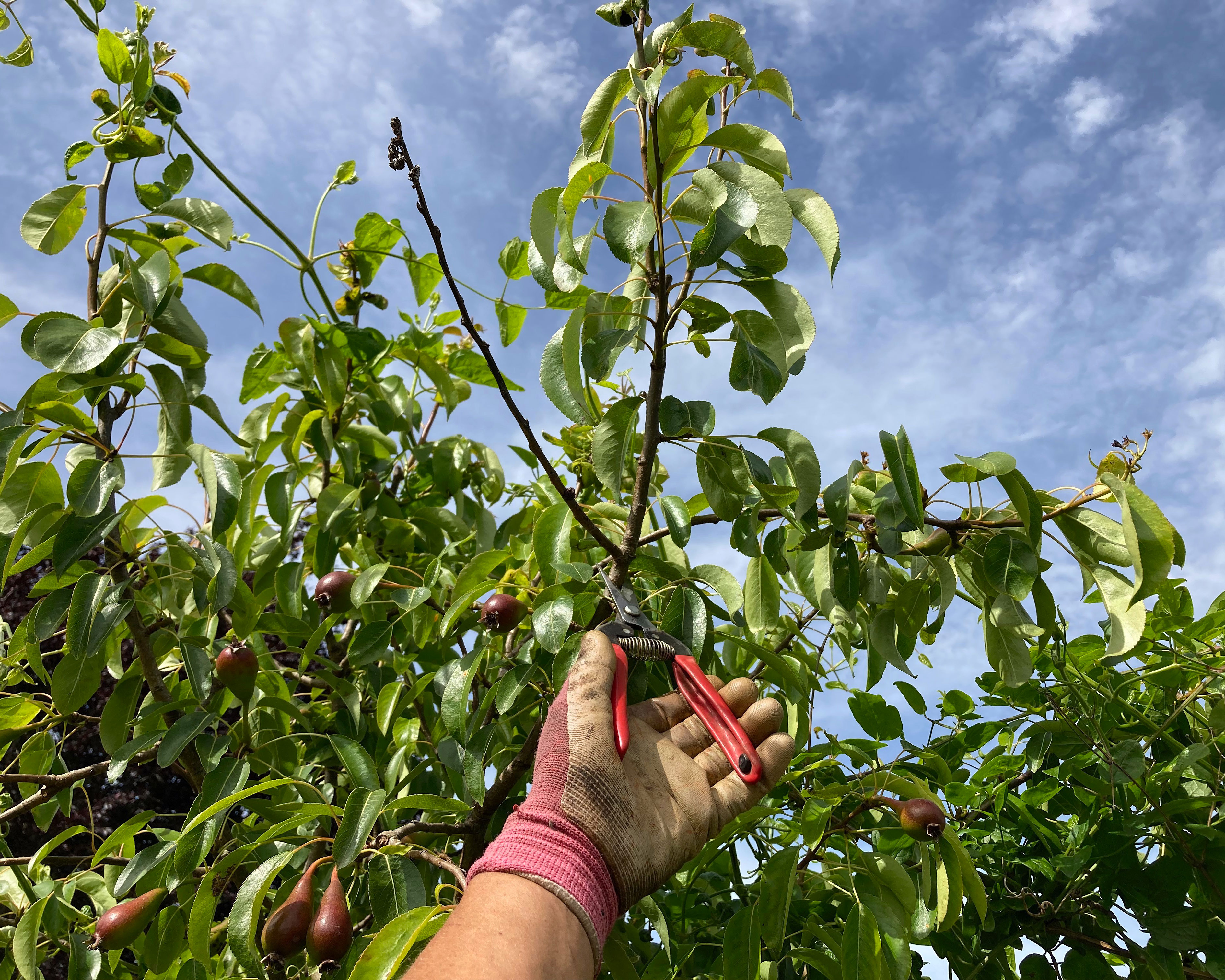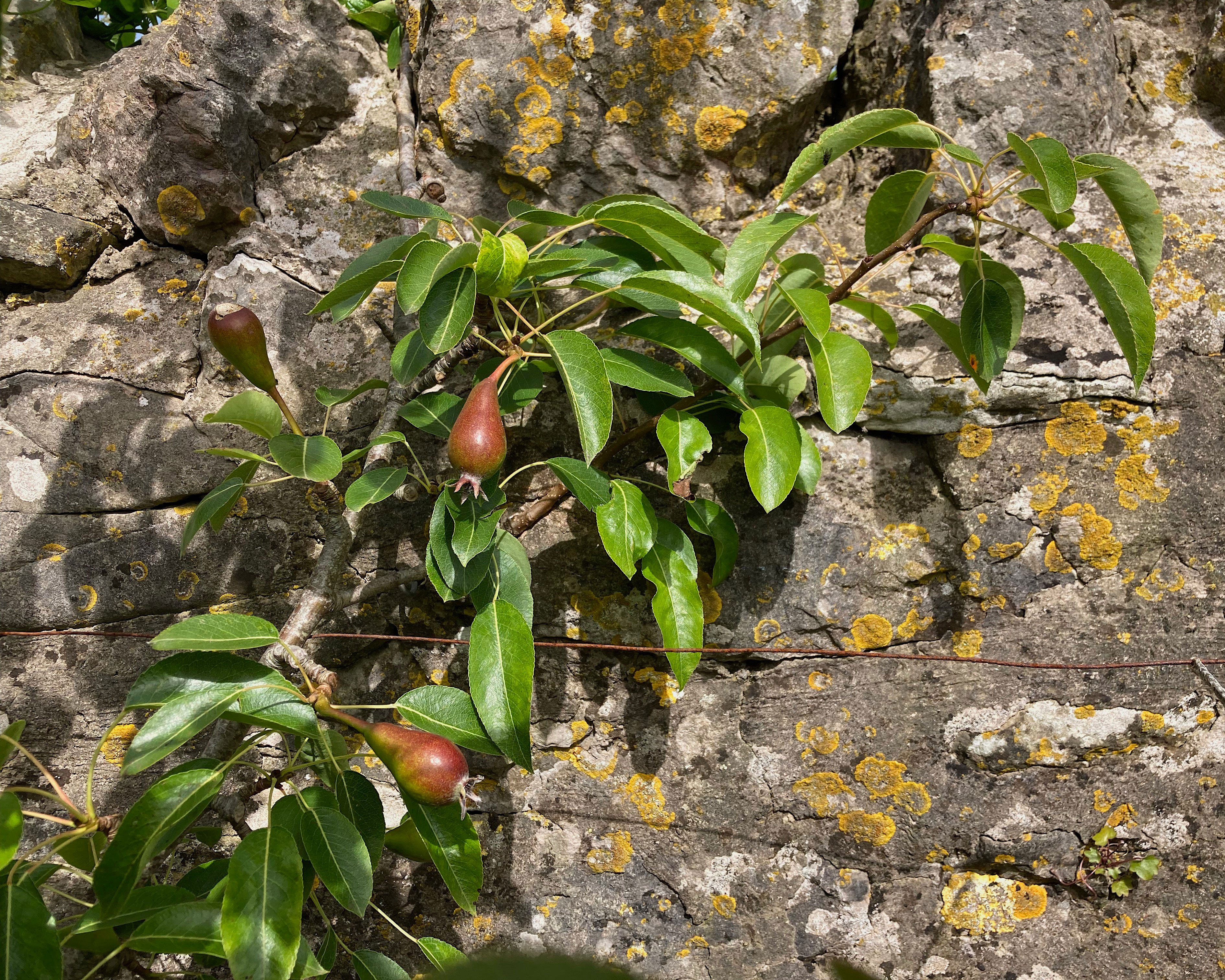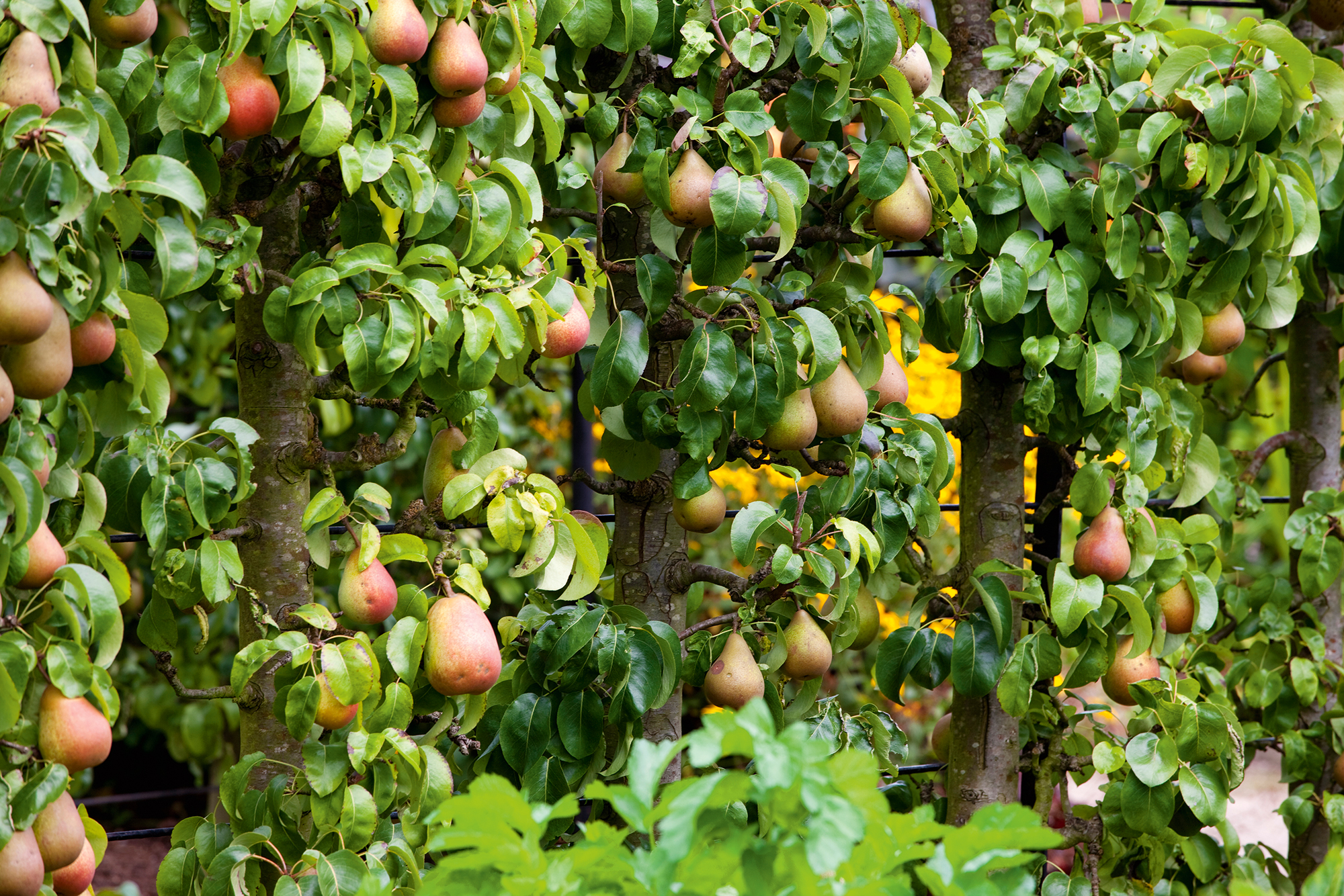How to prune pear trees – to maximize fruit production
Discover how to prune pear trees in summer and winter to create healthy, well-shaped and good-cropping trees


Learning how to prune pear trees will help you achieve a bumper harvest. Whether you have a large orchard or grow pear trees in pots on a balcony or patio, picking your own fruit straight from the tree is an absolute joy.
There are six main pear producing states in the USA: New York, California, Oregon, Michigan, Washington and Pennsylvania. These grow common European pears, Pyrus communis and Asian pears, Pyrus pyrifolia, producing many varieties of cookers and eaters – dessert pears – with myriad sweet flavors and fruit textures.
Pear trees are among the best fruit trees to grow, and certain varieties, such as Asian pears, are also among the fastest growing fruit trees.
They grow well in US hardiness zones 4-8, although some specific cultivars can also be grown in zone 3, 9 and 10. Pear trees are sun lovers but do require a long cold period during winter, this then stimulates the production of flower buds in spring once the tree breaks dormancy.
Whether you grow espalier, cordon, fan, potted or free-standing pears trees as part of your vegetable garden ideas, learning how to prune pear trees correctly at the right time of year is fundamental to keep your trees fruiting productively.

How to prune pear trees
When learning how to prune pear trees, as with pruning fruit trees in general, the most important lesson is to always to use clean, sharp secateurs, snips, loppers or a hand saw depending on the size of the material you are cutting. Always disinfect tools to avoid transferring diseases.
Take a moment to look at your tree and observe the shape. Is your tree congested with whippy watershoots?
Design expertise in your inbox – from inspiring decorating ideas and beautiful celebrity homes to practical gardening advice and shopping round-ups.
Remove any dead, diseased or damaged branches; this concentrates energy into producing fruit. If your tree suffers from fungal problems, pests or diseases, such as canker, fire blight, pear leaf blister mite or pear rust, pruning should help stop them spreading.
'Annual pruning and fruit thinning are essential to basic tree care. No tree will thrive without regular pruning, while thinning is often necessary to obtain optimal fruit quality and maintain annual production,’ advises Steve Cummins of Cummins Nursery, Ithaca, New York.
In an orchard, with free-standing trees, you are aiming for an open-vase shape in the center to allow plenty of light and air to flow. Air circulation is essential to reduce the spread of fungal diseases.
‘Aim to create a wineglass shape – a trunk topped by a crown of branches forming a cup,’ explains Zelah, gardener at Yeo Valley Organic.
‘Creating an open center on your pear tree can be slightly tricky as the branches tend to be more upright.’

What month do you prune pear trees?
The best months for when to prune free-standing pear trees are the same as pruning apple trees – over the winter months once the trees are dormant. Espalier, fan and any cordon trained pears you are growing as part of your vegetable garden trellis ideas, need summer pruning to maintain their shape.
How to prune espalier pear trees
The prime time to summer prune espalier pear trees is from mid-July to late August, depending on the climate in the region where you live.
Summer pruning pear trees restricts growth and helps maintain a good structural shape. Espalier are particularly ornamental as vertical garden ideas and are an impressive garden feature, so summer pruning will ensure your pear tree remains not only a productive cropper but a focal point to be admired.
Richard Borrie, joint owner of Orange Pippin Trees advises: ‘Fruit size is sometimes better as well because there tends to be fewer fruit, and also the tree may be putting more of its energy into the fruit rather than vegetative growth.’
Prune established espalier-trained pear trees by reducing new growth on previously pruned side shoots to one leaf from the basal cluster, and cut out growth that is detrimental to the overall shape, particularly vertical growth.
Basal clusters are the closely spaced rosette of two to four leaves at the base of a shoot. New shoots longer than 20cm can be reduced to three leaves from a basal cluster.
'Training fruit trees in this way can make a noticeable difference to the flavor of the fruit, compared with free-standing trees,’ says Richard Borrie.
You are aiming to maintain the shape of espalier tiers, reduce foliage growth, which will concentrate the tree’s energy and expose fruit to more sunlight.
’Position on a south or west-facing wall, as they prefer a sunny aspect. Chillier positions will affect the blossom,’ advises Zelah of Yeo Valley. ‘Once formative pruning has got them into the desired shape, spur prune in summer.’

How to prune fan-trained pear trees
Prune fan-trained pear trees in late summer when vigorous growth has slowed, this will help reduce re-growth. Always prune fruit trees during dry weather to reduce the risk of spreading fungal diseases.
'While fans may lack the formal style of espaliers, they are easier to maintain and a bit more productive,’ explains Richard Borrie. ‘As well as productive capacity, fans and espaliers have an appealing ornamental value in the garden,' he adds.

Winter pruning step-by-step
There are many reasons why pear trees need pruning in winter, just as there are with pruning a cherry tree. These include ‘to maintain vitality and promote new growth; to prevent overproduction of fruit, which can cause the tree to cease regular fruit production and become biannual,’ advises Steve Cummins.
Zelah from Yeo Valley offers the following step-by-step advice for how to prune a pear tree in winter when trees are dormant.
‘The basic principle for pruning is to halve new growth to an outward-facing bud and remove growth forming in the wrong place. This is carried out in winter. If you have bought a one-year-old tree, or maiden, your first three years may look like this:
- ‘Winter 1: Cut back central leader where the crown is to form.
- ‘Winter 2: Cut back should result in three or four good shoots forming. Halve each one to an outward-facing bud.
- ‘Winter 3: Cut half of each main stem to an outward-facing bud. The more vigorous the rootstock the more years you will spend formative pruning.’
Pruning stimulates growth. If left for a year, fruit buds will develop at the base of the stem. 'The stem can then be pruned back to the buds, which will generate fruiting spurs, as opposed to sending out more growth. Lateral shoots can be left so they form fruiting buds,’ advises Zelah.

How do you prune a mature pear tree?
‘As your pear tree matures, the key to pruning is to find a balance. You do not want to over-invigorate the tree with excessing pruning,’ says Steve Cummins.
Pears fruit best on wood aged around two to three years old, so rotate the pruning each year around your tree, although they will fruit on older wood. Unlike apple trees, pears fruit well on vertical branches. Stagger pruning rather than scalping the entire canopy.
Aim to remove any dead, diseased or damaged branches, and maintain the shape so there is plenty of light and airflow reaching the fruits.

How to prune a potted pear tree
Pear trees are among the best trees to grow in pots and it is easy to learn how to prune pear trees grown in this way. Pears are grown on grafted rootstock, so choose a dwarf variety suitable for pots; ‘Quince C’ rootstock is ideal. If you buy a pot appropriate pear tree, then pruning can be kept to a minimum.
‘You can prune to reduce the size of the tree, but choosing an appropriate rootstock in the first place will ensure the tree will never get beyond a certain size,’ says Zelah from Yeo Valley.
Make sure you know when to water plants and keep pots well watered and fed with a high potassium feed so fruits are nourished with nutrients and do not become water-stressed.
What are the benefits of training pear trees?
Whether you choose fan, cordon or espalier there are many benefits to training pear trees.
‘The fruit receives more light, which helps improve development of natural sugars and fruit color,’ Richard Borrie advises. ’You are naturally restricting the crop compared with a free-standing tree, and this can also help to improve flavor.’
Another benefit of trained fruit is they are economical with space; as long as you have a sunny wall available you will be able to enjoy a bountiful fruit crop in a fraction of space compared to an orchard, so is a good choice for trees for small gardens.
‘If you are training against a south-facing brick wall, the micro-climate allows you to grow varieties that would normally require a warmer climate and protecting the tree from frost or birds is relatively easy,’ says Richard Borrie.

Can you cut a pear tree back?
Be careful about cutting a pear tree back. Hard pruning can attract decay, so avoid taking out large branches unless absolutely essential; likewise do not remove tiny shoots.
Pruning will promote new vigorous growth, so unless you must remove this material, just leave it be. Fungal diseases can enter open woulds so consider all cuts made, and consider if you really need to make that cut.
It is better to prune minimally rather than too much. Compared to apple trees, pears are less vigorous so perform well even if only lightly pruned.
‘Once your tree is established try to keep pruning to a minimum if possible,' advises Zelah. 'If your tree is producing a good crop every year there is an argument to be made about doing absolutely nothing.’

Debi Holland runs her own garden business in the south of west of England, gardening in beautiful country homes, and also writes for numerous online and print publications and presents online talks advocating ‘Gardening for Wellbeing.’